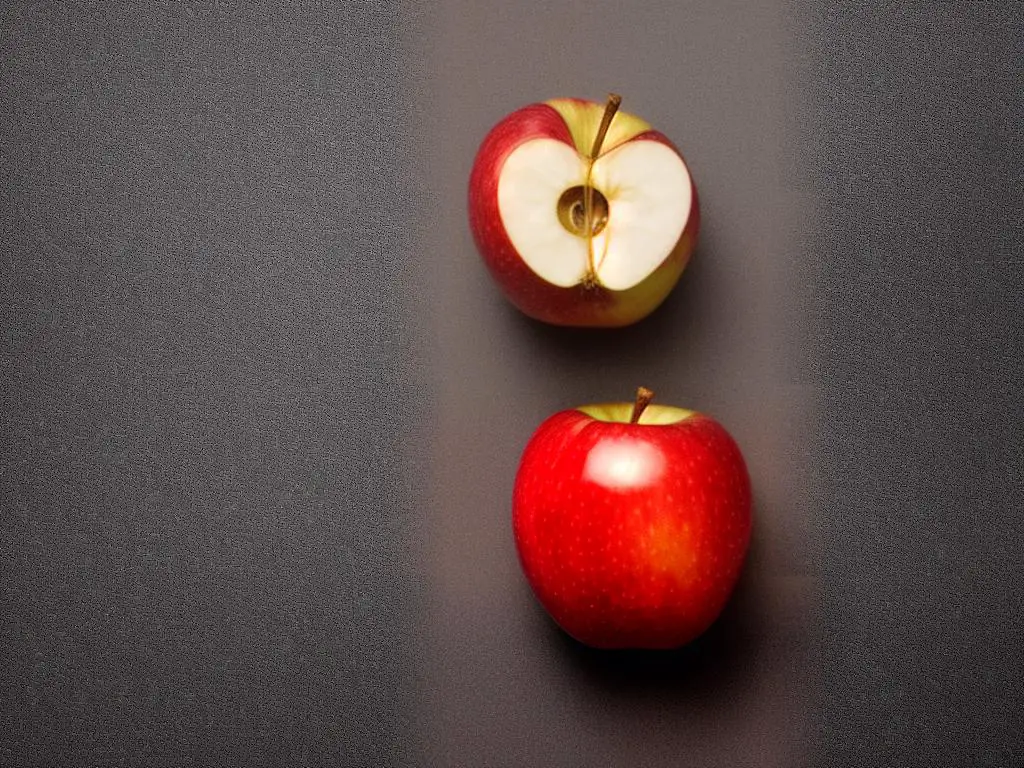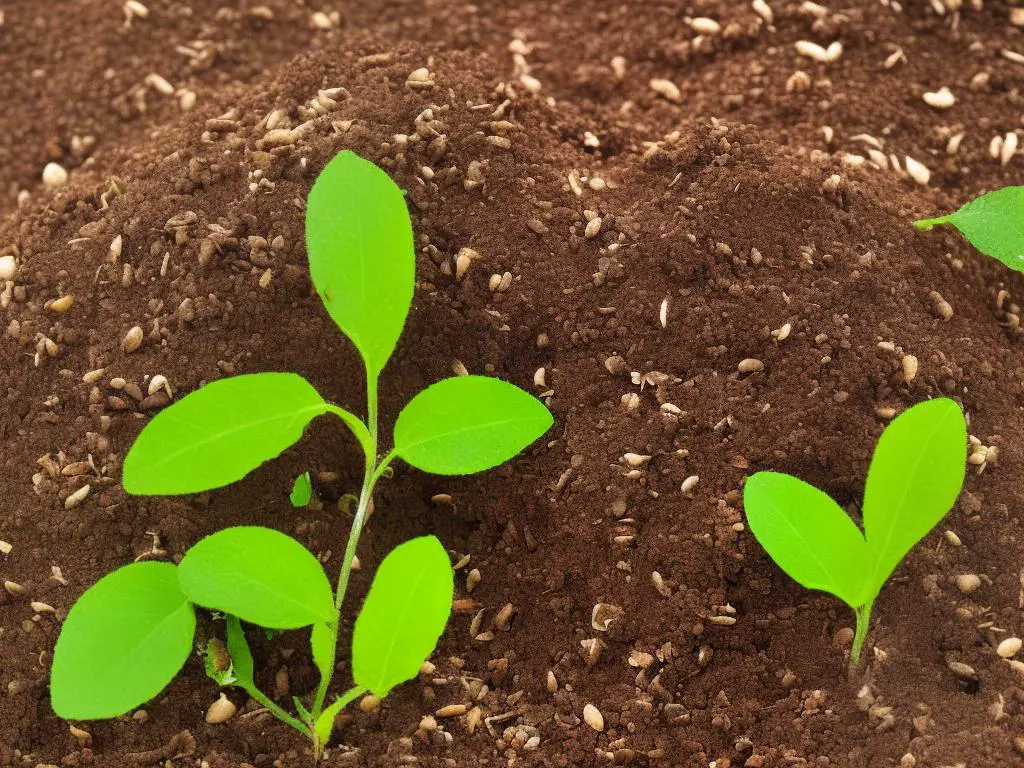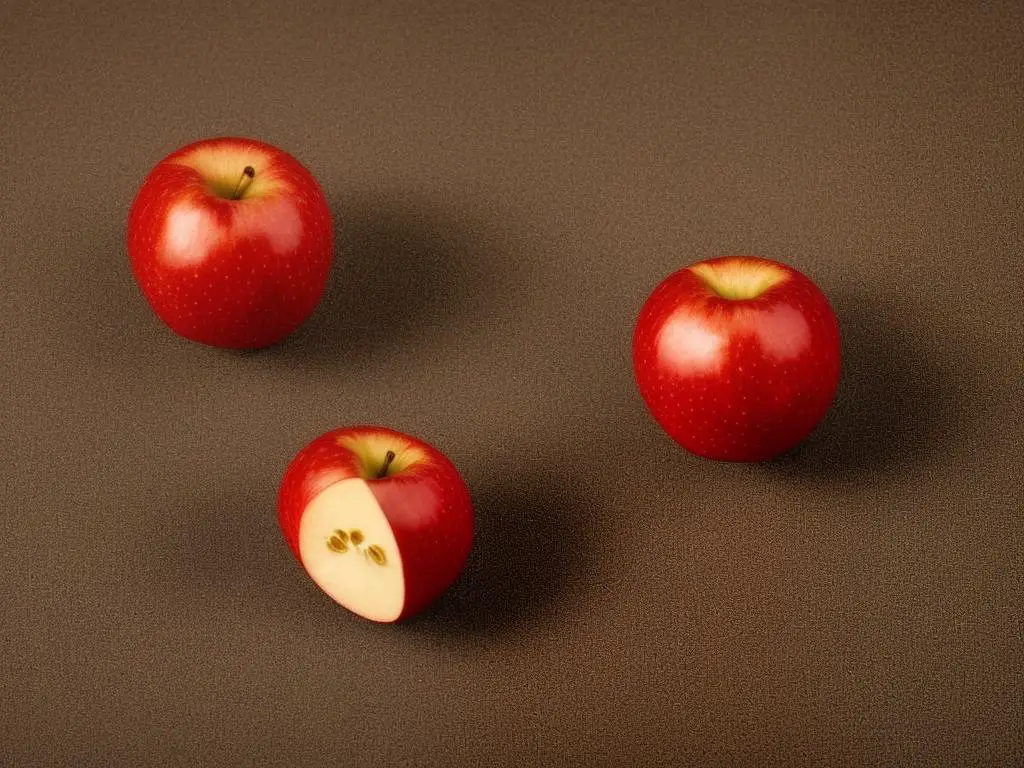Apples, the beloved fruit of many, have long been a symbol of growth and fertility, yet the humble apple seed often remains overlooked in discussions about these widely-enjoyed fruits. This essay seeks to explore the captivating world of apple seeds, demystifying their anatomy, germination, and even the existence of seedless varieties. Delve into the intricacies of this small yet essential component of the apple and learn how they play a crucial role in bringing us the crisp, juicy flavor we all know and love.
The Anatomy of an Apple Seed
Seed Formation and Structure
Apple seeds, like all seeds, are the product of the plant’s reproduction process. They are located in the apple fruit’s core, which develops after fertilization of the apple tree’s flowers. The apple fruit contains five seed pockets, also known as carpels. These carpels house the apple seeds, typically containing two to four seeds per carpel, depending on the individual apple species.
Apple seeds are relatively small, typically measuring around one-quarter of an inch in length. However, their size can vary depending on the particular apple variety. The seeds are tear-drop shaped, with one end tapering to a point and the other end a bit rounded. The outer cover of an apple seed is hard and shiny, protecting the seed’s delicate interior structures. The color of apple seeds can range from light brown to almost black, with coloration sometimes being an indication of the seed’s maturity.
Embryo: The Future Apple Tree
A key part of an apple seed is the embryo, which is the undeveloped apple tree present within the seed. The embryo consists of the shoot apical meristem, the root apical meristem, and the cotyledons. The shoot apical meristem is the region where the shoot, or above-ground part of the plant, will develop from. The root apical meristem is the region responsible for the development of roots. Cotyledons are the embryonic leaves that serve as an early source of energy for the developing seedling.
The embryo of an apple seed contains the genetic material from both the male and female parent trees. When conditions are favorable, the embryo will grow and develop into a new apple tree, carrying the traits from both the parent trees. This genetic diversity allows apple trees to adapt to various environments and thrive in different regions.
Endosperm: Food for Growth
The endosperm is another crucial component of an apple seed. It is a tissue that surrounds the embryo and serves as a food source for the developing seedling. The endosperm contains essential nutrients, such as carbohydrates, proteins, and lipids, which the embryo will utilize during germination and early growth.
When an apple seed germinates, the seedling’s roots and shoot emerge, and the cotyledon and endosperm provide necessary nourishment. As the seedling matures and the roots anchor into the soil, it begins to rely on the nutrients obtained from the environment.
Do All Apples Have Seeds?
While most apples that one encounters will have seeds, there are some cases where an apple may have few or no seeds at all. That can occur because of incomplete pollination of the apple flower or relatively low seed fertility in a particular variety of apple.
Incomplete pollination means that the female flower parts have not received enough pollen from the male flower parts, resulting in reduced or absent seed formation. In such cases, the apple fruit may still grow, but there might be fewer seeds than expected, or the seeds may be underdeveloped and non-viable.
Introduction
Apple seeds, which play a crucial role in the growth and development of apple trees, are found within the core of the fruit and are produced by flowers on apple trees. While most apples do contain seeds, there are occasional exceptions due to factors such as pollination and seed fertility, leading some to believe that certain apples may be seedless. In this article, we will explore the fascinating world of apple seeds, delving into their complex anatomy and importance in apple cultivation and breeding future apple varieties.

The Germination Process of Apple Seeds
Germination and Factors Affecting Seed Development
Apple seeds undergo a germination process, which involves the seed developing into a new apple tree. This process is dependent on various factors, including growing conditions, germination timeframe, and essential nutrients. However, the germination of apple seeds can be impacted by several factors, such as the type of apple, pollination success, and seed maturity. In this section, we will provide an in-depth look at the germination process of apple seeds, exploring the necessary conditions for successful growth and development, as well as common factors that can hinder germination success.
Necessary Growing Conditions
Apple seeds have specific growing conditions required for successful germination. These conditions include the following:
- Stratification: Before planting, apple seeds need to be kept in cold and moist conditions for a period, to trigger germination. This is called stratification. It can be achieved by placing the seeds in a plastic bag with moistened peat moss or a paper towel, and then storing the bag in the refrigerator for around 2-3 months.
- Soil: Apple seeds require well-drained, fertile soil with a pH level between 6.0 and 7.0. The soil should also be rich in organic matter to provide the necessary nutrients for seedling growth.
- Temperature: The ideal temperature for apple seed germination is between 70 and 75 degrees Fahrenheit (21 to 24 degrees Celsius). Higher or lower temperatures can impact germination success.
- Light: Apple seeds do not require light for germination. However, once a seed has germinated, the emerging seedling will need a sufficient amount of light for healthy growth and development.
Germination Timeframe
Germination timeframe varies depending on the seed’s viability and growing conditions. After stratification, apple seeds can take anywhere from 14 to 60 days to germinate. The germination process begins when the seed absorbs water, and the embryo breaks out of the seed coat. As the embryo grows, it will develop a root system and eventually sprout above the soil surface. The first set of leaves, called cotyledons, will appear and support the seedling as it begins to develop true leaves and its stem off the cotyledons starts growing steadily.
Essential Nutrients
Like all plants, apple seedlings require specific nutrients for proper growth and development. These nutrients include:
- Macronutrients: Nitrogen, phosphorus, and potassium are the primary macronutrients required by apple seedlings. Nitrogen promotes stem and leaf growth, phosphorus is important for root development and energy transfer, and potassium contributes to overall plant health.
- Micronutrients: Apple seedlings also require trace amounts of micronutrients, such as iron, manganese, zinc, and copper, for optimal growth.
- Water: Proper hydration is critical for apple seed germination and seedling growth. Maintain consistent soil moisture and avoid over or under-watering, as it can lead to poor germination and weak seedlings.
Factors that Impact Germination Success
There are several factors that can influence the germination success of apple seeds. These factors include:
- Seed Viability: Not all apple seeds are viable, meaning they are not capable of germination. This is particularly true for seeds taken from store-bought apples, which may have been treated or stored in such a way that the seeds are no longer viable.
- Seed Age: The age of the seeds can also impact germination success. Older seeds may have lower germination rates, as they may have been exposed to environmental factors or lost viability over time.
- Environmental Conditions: As previously discussed, the growing conditions need to be suitable for apple seed germination. Supoptimal temperature, soil, or moisture levels can negatively impact germination rates.

Seedless Apples: Fact or Fiction?
Seedless Apples: Exploring the Concept
Apples are known worldwide for their sweet and juicy fruits, which are a staple in many households and diets. Traditionally, apples contain seeds within their core, allowing for the growth of a new apple tree when planted. However, the concept of seedless apples has piqued the interest of both apple enthusiasts and horticulturists alike. This article takes a closer look at seedless apples, their potential existence, and the factors that may contribute to their development, such as genetics and commercial considerations. By exploring these concepts, hobbyists can further their knowledge and appreciation for the diverse and remarkable world of apple cultivation.
Genetic Factors and Breeding Technologies
The occurrence of seedless fruits is not a novel concept in the field of agriculture. Other popular fruits, such as watermelons and grapes, have become widely available in seedless varieties due to selective breeding or genetic modification. In the case of apples, the existence of seedless varieties is largely due to genetic factors in their parent plants. Some apple trees produce fruits with little to no seeds, as a result of mutations, or an inability to produce viable pollen or ovules.
A technique called parthenocarpy stands out as a promising method to develop seedless apple varieties. Parthenocarpy induces fruit development without the need for fertilization, which ultimately results in seedless fruits. While this method has been successful in other fruit plants, seedless apples produced through parthenocarpy have not yet become commercially viable.
Commercial Interest and Impact on Apple Cultivation
From a commercial standpoint, seedless apple varieties could have a tremendous impact on the apple industry. Seedless fruits generally appeal to a wide range of consumers, who prefer the convenience of not having to deal with seeds when consuming their favorite fruits. As a result, the cultivation of seedless apple varieties could provide a valuable niche in the competitive global market.
Nevertheless, the development and cultivation of seedless apples face some challenges. Firstly, apple trees require cross-pollination to produce their fruits, which means that growing seedless varieties may require planting other apple tree cultivars nearby to ensure proper pollination. Additionally, despite advancements in horticultural technology, creating a truly seedless apple variety that maintains desired taste, texture, and overall quality remains a difficult process.
The Future of Seedless Apples
As the science behind seedless apple production continues to develop, it is essential to consider the implications of these varieties on both the industry and the environment. While seedless apples offer the potential for increased convenience and consumer satisfaction, their cultivation might require additional input in the form of fertilizers, plant growth regulators, or other chemicals to achieve the desired results without negatively impacting the overall fruit quality.
As seedless apple varieties are yet to hit the market, there is still much research and development to be conducted before these products become a reality. Nevertheless, the concept of seedless apples illustrates the power of human ingenuity and drives advancements in agricultural science forward. As for now, apples will continue to have seeds. However, who knows what the future holds for this classic, much-loved fruit?

Through exploring the anatomy of apple seeds, the germination process, and the existence of seedless apples, it becomes evident that the apple seed plays a crucial role in the cultivation of this popular fruit. Understanding these aspects not only enriches our knowledge as enthusiasts or hobbyists but also sheds light on the fascinating relationship between nature, science, and the foods we consume. May this newfound appreciation for apple seeds not only enhance our enjoyment of apples but also inspire curiosity and respect for the intricate biological processes that are often taken for granted in our everyday lives.